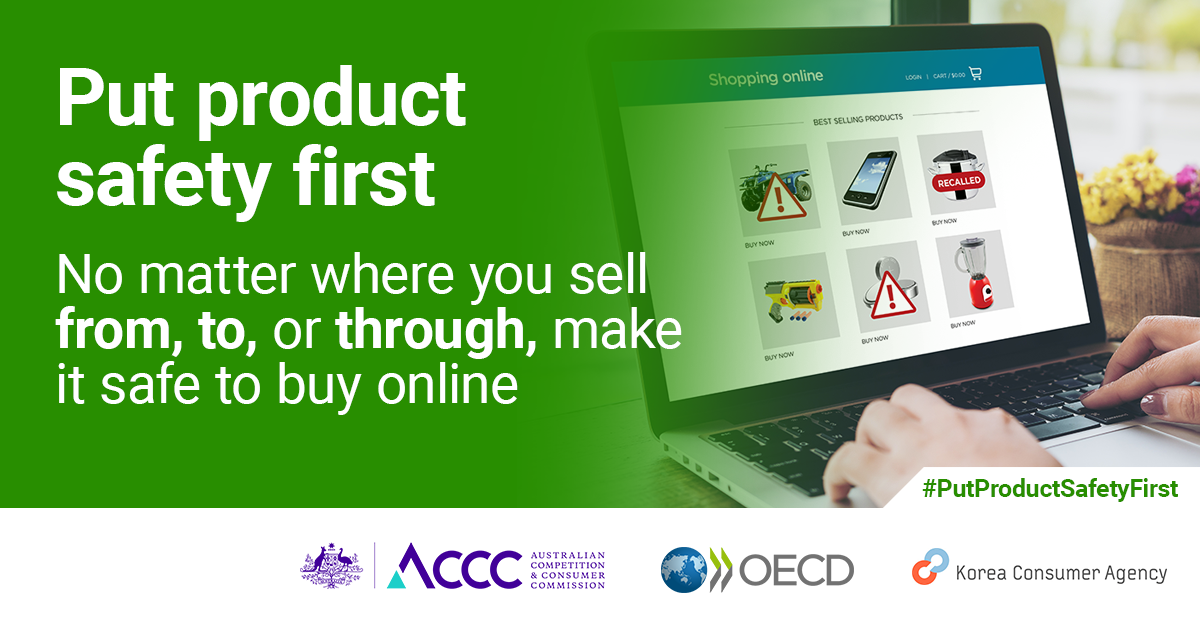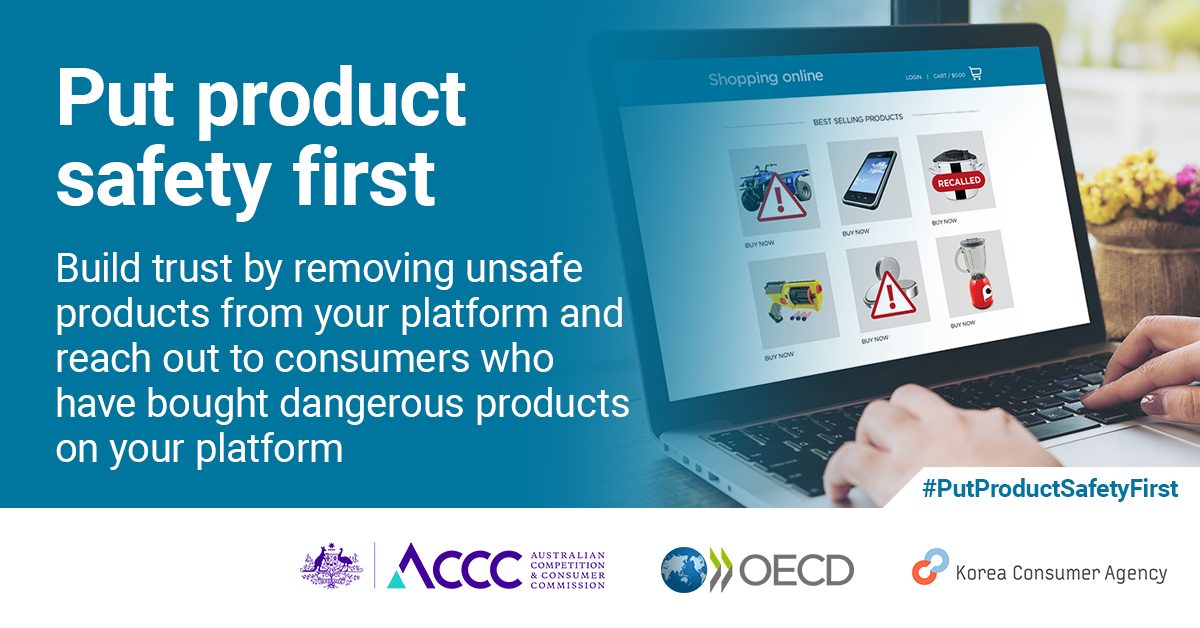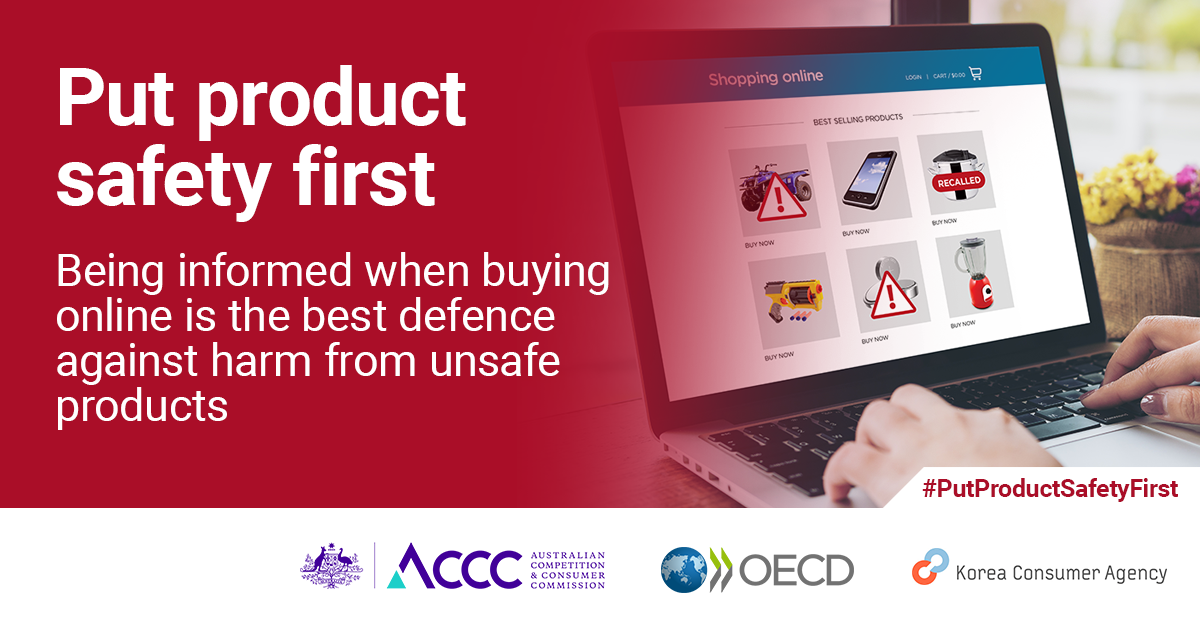Put product safety first: OECD online product safety sweep
A range of unsafe products, which have been prohibited from sale or recalled from the market, or present inadequate product labelling and safety warnings, remain available for sale online.
According to an OECD online product safety sweep conducted in 2021, out of 1196 products inspected, 1044 banned/recalled products (87%) were found to be available for purchase. In addition, out of 1410 products inspected, 438 (31%) had inadequate product labelling and safety warning.
These unsafe products online can cause detriment to consumers, including physical injury, financial harm, and even death.
OECD online product safety sweep
- 4299 products inspected in 21 jurisdictions
- Focus on three types of issues and seven product categories
- Higher average non-compliance rate of products (79%) identified than in the 2015 OECD online product safety sweep (76%)
- Higher non-compliance rate found on online marketplaces (79%) than on retailer websites (75%)
- Foreign suppliers had a higher average non-compliance rate (80%) than domestic suppliers (76%), similar to in 2015
Building on the results from the 2021 online sweep, an OECD global awareness campaign will be carried out from mid-November to mid-December 2022 to alert online platforms, online sellers, and consumers about the safety risks and issues associated with products sold online. The event will take place in conjunction with the International Product Safety Week (14-17 November). The campaign is coordinated by the Australia Competition and Consumer Commission (ACCC) and the Korea Consumer Agency (KCA).
Safety messages for online sellers
When listing
- Check local and global recalls regularly.
- Know what’s banned or subject to mandatory requirements, in every country you sell to.
- Include product safety information, warnings, directions for use, age recommendations and labels in listings.
After listing
- Swiftly identify and remove unsafe products from sale as part of the recall.
- Keep consumers informed – contact them when product safety concerns arise.
- Be clear with consumers – if a product is identified as unsafe, advise them of the risk and action they should take to participate in the recall.
- Be contactable and responsive to consumers and authorities.
Safety messages for online marketplaces
- Take measures to confirm the identity of, and vet, sellers before they list.
- Make the sellers’ identity and contact information visible.
- Consider implementing unique seller and product identifiers.
- Make it easy for consumers to report unsafe products to you and the seller.
- Help consumers make safe decisions – share product safety information effectively and require sellers to include all relevant product safety information in their listings.
- Work with product safety regulators to identify and respond to emerging risks and persistent problems.
- Educate sellers on their legal obligations in the jurisdictions they sell to.
- Use technology to prevent, detect and remove unsafe products, especially those on the OECD Global Recalls portal and other public databases.
- Check local and global recalls regularly.
- Ensure sellers advise consumers to stop using unsafe products and take corrective action such as a recall – and, if the seller isn’t doing so, provide appropriate consumer advice and remedies.
- Make a list of recalled products that were sold on your platform, and make it easy to find and read.
Safety messages for consumers
Before purchase
Stop, check and ask: is it safe?
- Know who you’re buying from – check out the seller’s history, ratings and policies.
- Is it prohibited/banned from sale? If it is, don’t buy it.
- Has it been recalled?
- Are there mandatory safety features it needs to have?
- Is there safety information on the listing?
- Ask the seller if you’re unsure — if they can’t reassure you, don’t buy it.
- Report products you think are unsafe.
After purchase
Stop, check and inspect
- Does it have the features you were told it would have?
- Does it have safety warnings or instructions?
- Stop and read any safety warnings or instructions.
- If you think it’s unsafe, report it to authorities, the seller and the online marketplace.
- Register your product to be notified of recalls or other product issues.
- Always follow advice about recalled products.
The following 21 jurisdictions took part in the sweep: Argentina, Australia, Belgium, Brazil, Colombia, Costa Rica, France, Germany, Iceland, Israel, Italy, Japan, Korea, Latvia, Lithuania, Mexico, Peru, Singapore, Sweden, Turkey, and the United Kingdom.
Similar to the online product sweep undertaken in 2015, this sweep examined three issues recognised as potential sources of consumer harm when shopping online:
- banned or recalled products
- inadequate product labelling and safety warnings
- products that do not meet voluntary or mandatory safety standards
The seven product categories focused on were: toys/games, household electrical, household non-electrical, sporting/recreation, apparel, infants/children, and portable technology.
The full sweep summary report will be published in early 2023.


